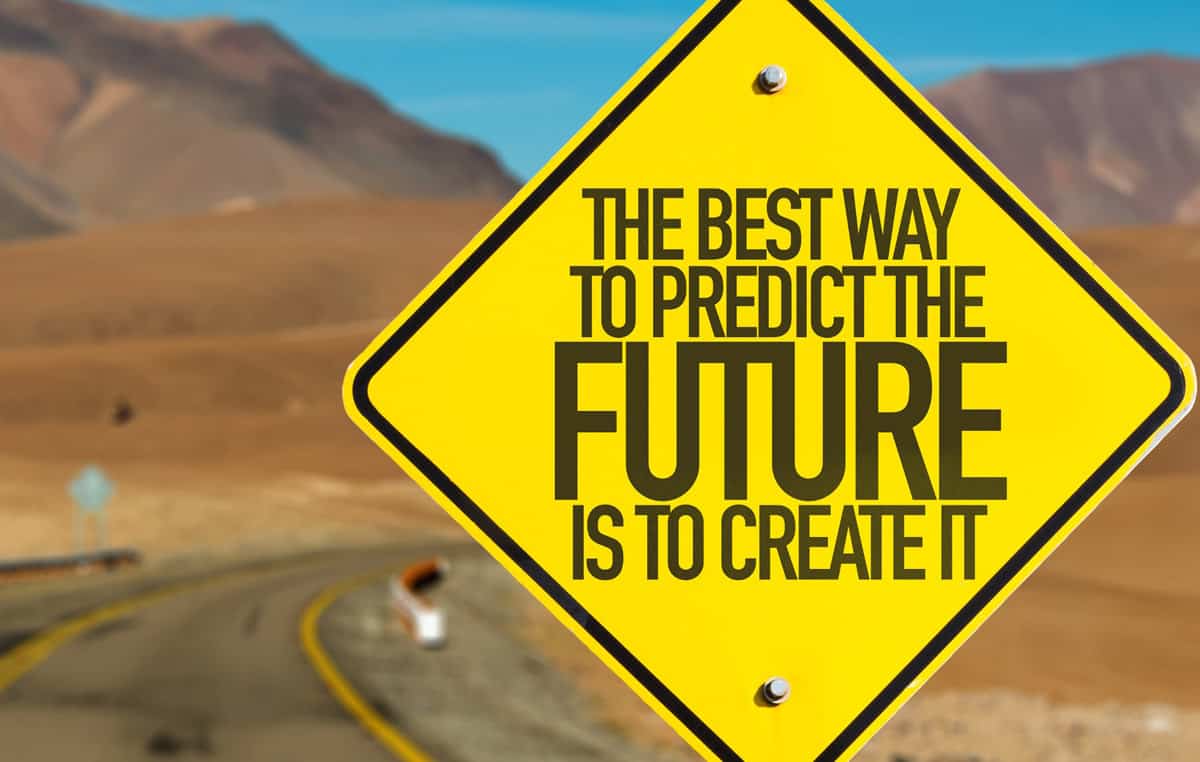
Why meetings are unproductive and what to do about it
“I’ve been in meetings all day, it was such an excellent use of time!” said nobody, ever.
When time is such a precious, non-renewable resource, how come we’re prepared to squander so much of it on unproductive meetings?
Effective meetings boost innovation and wellbeing
Good meetings are a source of innovation. By definition, they’re a coming together of people; and these encounters spark fresh thinking and ‘social learning’ that accelerates our personal and professional development.

Not only that, but meetings allow us to bond with colleagues and forge friendships at work that boost creativity, employee engagement and happiness. They enable us to collaborate, solve problems and take our organizations to new heights.
So, given they have the potential to deliver all of these benefits, how come we feel that so many meetings are a waste of time?
The curse of too many meetings
For many, the problem lies in the sheer number of meetings.
One large company discovered that their weekly executive meeting was consuming a whopping 300,000 hours per year.
How it this possible? I hear you ask.
First of all, each week, senior advisers met with their teams to get an update. Those senior advisers then met with unit chiefs to give them an update. The unit chiefs met with senior execs to give them an update, so that the senior execs were all set for their weekly update meeting. Rinse and repeat.
Albeit that this productivity black hole appeared to swallow a horrifying 300,000 hours per annum, the reality was far worse. What about the time it took each individual to prepare for all these meetings?
Every day, many of us go about our daily business completely unaware of the part we play in weaving a vast web of costly, unproductive meetings.
How many meetings take place worldwide?
The number of meetings in the US every day
It’s often stated that US workers attend 11 million meetings per day, but this stat has been quoted since the 70s, so chances are it’s out of date. In 1996, Michael Doyle claimed in his book that there were 25 million meetings every day. Getting closer, but still a way off.
More recently, in this article, Elise Keith demonstrates that if we extrapolate this trend curve we’d be looking at 39-56 million meetings per day in the US by 2015.
The number of meetings in the UK every day
A 2019 study found that your average British worker spends 213 hours per year in meetings. Let’s be conservative and assume that this applies to the half of the UK workforce involved in ‘knowledge work’; and assuming each meeting is on average 45 mins long… we’re looking at around 17 million meetings per day.
“A meeting is a place where you keep the minutes and throw away the hours” – Thomas Kayser
So how many meetings happen globally each day?
Although it’s impossible to come up with an accurate figure for the number of meetings taking place around the world every day, it’s safe to assume that the answer rolls into hundreds of millions. Gulp.
How much do unproductive meetings cost?
Given that humans of Earth hold hundreds of millions of meetings every single day, the cost is almost unfathomable. But for the sake of this article, let’s take a stab at fathoming it.
Studies of managers and knowledge workers reveal that they spend between 25-80% of their time in meetings, accounting for a giant chunk of People costs.
Meanwhile, how many meetings are productive? According to this survey, executives view more than 67% of meetings as unproductive failures.
A fairly typical company loses $54 million due to bad meetings
To put this level of waste context, at one location in a large company, researchers Mosvick and Nelson performed a detailed value analysis of 7,000 managers and technical professionals, revealing an annual loss of over $54 million due to ineffectively planned and conducted meetings.
The true cost of meetings worldwide
Another trendy stat that’s bandied about is that unproductive meetings cost the US economy $37 billion a year. However this figure comes from research published in Industry Week in 1989, so is likely to be a gross underestimation.
According to Doodle’s 2019 State of Meetings report, the cost of badly organized meetings is more like $399 billion in the US and $58 billion in the UK, totalling almost half a trillion dollars from just two countries.
It’s safe to say that there is no such thing as a free meeting. In fact, unproductive meetings are costing the global economy gazillions of dollars per annum.
What’s more, the cost of bad meetings isn’t limited to the time that we waste attending them.
The cost of arranging meetings
Research shows that 40% of workers in large organizations waste 30 minutes per day search for conference rooms and spaces to collaborate; and spend on average 4.75 hours per week arranging meetings.
In an organization of 5,000 employees, this equates to 1,000 work hours per day searching for rooms and 9,500 hours per week arranging meetings. Wow.

It’s no wonder that workplace scheduling systems – including room booking and desk booking – are seeing high adoption rates.
The hidden costs of unproductive meetings
Do you suffer from Meeting Recovery Syndrome? If so, you’re not alone. Researchers Doyle and Strauss named the syndrome in their 1982 paper, estimating that the time lost to cooling off after a frustratingly ineffective meeting may cost $800,000 per 1,000 employees.
Yet ‘MRS’ is only scratching the surface. Unproductive meetings erode employee satisfaction and engagement, which in turn translates to employee turnover.
The link between meetings and job satisfaction: a case study
When satisfaction took a dive amongst engineers at a division of Microsoft, management tracked the problem back to large 10-20 person ‘coordination’ meetings. Leaders had set these meetings with the best of intentions, but they were destroying productivity and wellbeing by eating into time that the engineers wanted to spend achieving project goals or in smaller meetings focused on innovation and creativity.
Unproductive meetings reduce employee engagement & risk talent churn
Surprisingly enough, according to MIT, there’s no direct relationship between the number and length of meetings people are obliged to attend and their job satisfaction. Instead, they found that the relationship between meetings and employee satisfaction depends on your personality; specifically your level of ‘accomplishment striving’.
In other words, if you’re a goal-orientated person who thrives on getting things done, your levels of job satisfaction and engagement are likely to be damaged by meeting overload. Less goal-orientated people, on the other hand, are much happier to spend time in meetings. This could be due to social reasons or because it brings structure to their day.
Several studies have found that the single greatest factor influencing job satisfaction is how people feel about the effectiveness of the meetings they attend.
If you sit through a bunch of bad meetings, research shows that your stress levels will soar and you’re more likely to jump ship and look for a job elsewhere.
Meeting overload causes employee burnout
The more time people spend in meetings, they less time they have to spend on other tasks. As a result, many employees find themselves using personal time to catch up. Sacrificing time with friends and family – not to mention sleep – reduces productivity, increases presenteeism and creates an unsustainable work pattern than often results in burnout.

Burnout costs up to $190 billion per year in healthcare spending in the US alone, yet the true cost is much higher.
According to Gallup, 23% of employees report feeling burnout at work very often or always – which accounts for 20-50% of staff turnover.
Meetings can get in the way of ‘deep work’
Meetings often punctuate our daily lives, causing us to stop what we’re doing and switch from focused to collaborative mode. The result is that meetings erode our ability to perform ‘deep work’.
Deep work – a term coined by Cal Newport in his book on the subject – describes ‘the ability to focus without distraction on a cognitively demanding task’.

Deep work can, in fact, be collaborative. In small groups of two or three, we can focus deeply on a task together, sparking off one-another. Yet how many of your meetings feel like this, vs a distraction from ‘real’ work?
Most meetings are low value ‘shallow work’: comprising non-cognitive, logistical or minor work that’s performed in a state of distraction.
Meetings exacerbate the cost of task switching
Research has shown that multi-tasking has a more devastating impact on productivity than you might expect.
Researcher David Meyer found that even brief shifts from one task to another could cost as much as 40% of someone’s productive time. Our brains, it turns out, are not built for multi-tasking.
When we find our daily schedule fragmented by unproductive meetings, the toll on our ability to produce high quality work is severe.
How to destroy productivity with the bad meeting trifecta
Unproductive meetings provide the perfect storm: a combination of shallow work, task switching and low accomplishment.
The scariest thing about this trifecta of meeting madness is the fact that it targets your best people. Those who suffer the most are your top performers: those who could be accomplishing incredible things if they could strike a better balance between shallow work, deep solo work, deep collaborative work and rest.
5 ways to improve meeting productivity by building better meeting habits
Bad meeting habit #1: multi-tasking
According to Atlassian’s infographic, 91% of people daydream during meetings, 39% of people sleep during meetings and 73% of people do other work in meetings.

3 tips for reducing multi-tasking in meetings:
- Openly discuss with people how they feel about the use of phones and laptops at meetings. If some believe that using devices is reasonable, because the discussion isn’t directly relevant to them, question whether the agenda or attendees list needs adjusting.
- Agreeing to ‘no devices during meetings’ can boost engagement and focus, improving the efficiency of meetings.
- What’s more, if people routinely use meetings time to accomplish unrelated tasks, such as checking emails, stopping this habit will have the knock-on effect of encouraging greater efficiency. People are likely to do more advanced prep, have briefer meetings and build better meeting habits if they are fully focused on achieving the purpose of the meeting.
Bad meeting habit #2: no clear meeting objective
Status update meetings and recurring meetings are particularly often held out of habit, without much thought given to the purpose of each meeting.

2 tips for setting clear meeting objectives:
- Cancel meetings that don’t have a clear desired outcome and encourage your colleagues to do the same.
- If you receive a meeting invitation that doesn’t have a clearly defined outcome, ask the organizer to provide one. If someone can’t define the outcome of their meeting, chances are it’s a time-waster.
Bad meeting habit #3: allowing meetings to drag on for too long
Parkinson’s Law states that “work expands so as to fill the time available for its completion”. This is certainly true in the land of unproductive meetings.

4 tips for having shorter meetings:
- Try taking a leaf out of Google Ventures’ playbook. They invested $25 in a ‘time timer’ clock that visibly ticks away in plain sight, to reduce meeting creep.
- Having people stand up in meetings can cut meeting times by 25%, while helping to tackle the health issues associated with excessive sitting.
- Make shorter meetings a shared goal. Try replacing 1 hour slots with 30 minute or 45 minute slots and discuss ways to shorten meetings.
- Set a clear agenda. Instead of using headlines like ‘customer service improvement’ or ‘strategic planning’, reframe the issues you want to discuss as specific questions, e.g. “How will we shorten the time to answer support calls by 25% by the end of the year?” Agendas based on questions encourage critical thinking and better quality meeting prep.
Bad meeting habit #4: inviting too many people to your meetings
Inviting too many people can waste time and lead to unproductive meetings.
When your meeting is too big, rich debate is often replaced by short, shallow contributions; people are more guarded and less open; and there isn’t enough time for everyone to contribute.
So what is the ideal meeting size?
Some swear by the Rule of 7. Others limit their meeting size to 5, because research on team size revealed The Ringelman effect: that individuals tend to contribute less when more than 5 or 6 people attend a meeting, knowing that others will pick up their slack. This is sometimes know as ‘social loafing’.
Then there’s the more nuanced 8-18-1800 rule:
- For problem-solving and decision-making meetings, invite no more than 8 people. Any more than this and it’s easy to get caught up in conflicting input that wastes time and hampers decision-making.
- For brainstorming meetings or meetings that require people to give updates, invite no more than 18 people.
- For meetings designed to rally the troops, such as town hall meetings, go up to 1800 or more.

3 tips for reducing meeting size:
- Think carefully about each attendee. Are they equipped to make decisions, take action or bring significant information to the table? Are you inviting multiple people from one team, duplicating effort?
- Discuss with your colleagues to share your intention of having smaller meetings and encourage others to do the same. Cite richer discussions and better decision-making as key benefits.
- Trust people to decide whether or not they should attend and give them permission to decline the meeting.
Now that we’ve covered meeting habits and tips for having better meetings, let’s zoom out and look at the bigger picture of culture change. Meetings are a core component of your organizational culture, so transforming meeting productivity can have a transformational impact on employee experience and results.
A 4 step process for transforming meeting productivity
- Research – gather feedback from everyone to learn how meetings are impacting their productivity and wellbeing. This can be done via surveys and interviews.
- Analysis – have everyone review the data gathered in step 1, to draw their own conclusions about what is and isn’t working. Create an open environment where people can honestly discuss the findings.
- Prioritize ‘white space’ – normalize the creation of meeting-free chunks of time in everyone’s working week. Some organizations do this broad brush, e.g. by introducing ‘meeting free Fridays’, but this could miss the nuances in each individual’s situation. What’s important is granting people more autonomy over how they spend their time.
- Regularly review – check how people are feeling, whether they think their time is being spent more productively, how they perceive the quality of collaboration and team work and whether there’s a need for further adjustment.
Mastering the art of the perfect meeting
Get this right and transforming meetings in your organization or team can serve as a trojan horse for wider culture change.
Most people can relate to the problem with unproductive meetings. That’s why it’s the perfect opener for a wider discussion around the way you work.
Improving our meetings improves not only our organizations and results, but also our lives.

And there’s more…
If you enjoyed this article and share our passion for creating better workplaces, check out these free ebooks and these webinars.
Smartway2 provides next-generation workplace scheduling solutions to organizations around the globe, including COVID-safe workplace capabilities. To find out more contact us or request a demo.
Download eBook: The Future of Work
Your definitive guide to the future of work. Looking beyond the hype to what you really need to know (and do). Topics include machine learning, smart buildings, automation and more!



